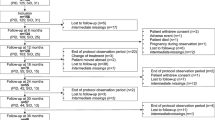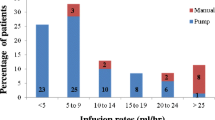Abstract
Immunoglobulin (IgG) replacement is a life-saving treatment for individuals with primary immunodeficiency disease (PIDD). Today, there are many options for IgG replacement, and the choice is an individual one based on many factors. My preference for most patients is the subcutaneous (SCIG) route. It offers many advantages not offered by the intravenous (IVIG) route. These include: 1) independence from hospital-based infusion settings; 2) an alternative for patients with poor venous access; 3) better tolerability in those patients who are not able to tolerate IVIG; 4) flexibility of dosing; 5) ease of administration; 6) a very low side-effect profile; 7) a comparatively more even, almost physiological, IgG level; 8) less cost to administer than IVIG; and 9) improved quality of life in patients treated with SCIG compared with those treated with IVIG. For most patients with PIDD who require IgG replacement, SCIG offers advantages not available with IVIG.



Similar content being viewed by others
References
Berger M. Subcutaneous immunoglobulin replacement in primary immunodeficiencies. Clin Immunol. 2004;112:1–7.
Gardulf A, Hammarstrom L, Smith CIE. Home treatment of hypogammaglobulinaemia with subcutaneous gammaglobulin by rapid infusion. Lancet. 1991;338:162–6.
Hizentra, Immune Globulin Subcutaneous (Human), 20 % Liquid. CSL Behring AG, Bern, Switzerland; March 1, 2010. Available at: http://www.hizentra.com/docs/hizentraPI.pdf. Accessed Nov. 16, 2012.
GAMMAGARD LIQUID [Immune Globulin Infusion (Human)] 10 % Solution, for intravenous and subcutaneous administration. Westlake Village, CA: Baxter Healthcare Corporation; 2012. Available at: http://www.baxter.com/products/biopharmaceuticals/downloads/gamliquid_PI.pdf. Accessed Nov. 16, 2012.
Vivaglobin (Immune Globulin Subcutaneous [Human]). CSL Behring GmbH; 2006. Available at: http://www.cslbehring.com/docs/31/247/Vivaglobin%20April%2010%20PI,0.pdf. Accessed Nov. 16, 2012.
Gardulf A, Nicolay U, Math D, Asensio O, Bernatowska E, Böck A, et al. Children and adults with primary antibody deficiencies gain quality of life by subcutaneous IgG self-infusions at home. J Allergy Clin Immunol. 2004;114:936–42.
Berger M, Rojavin M, Kiessling P, Zenker O. Pharmacokinetics of subcutaneous immunoglobulin and their use in dosing of replacement therapy in patients with primary immunodeficiencies. Clin Immunol. 2011;139:133–41.
Skoda-Smith S, Torgerson TR, Ochs HD. Subcutaneous immunoglobulin replacement therapy in the treatment of patients with primary immunodeficiency disease. Ther Clin Risk Manag. 2010;6:1–10.
Chapel HM, Spickett GP, Ericson D, Engl W, Eibl MM, Bjorkander J. The comparison of the efficacy and safety of intravenous versus subcutaneous immunoglobulin replacement therapy. J Clin Immunol. 2000;20:94–100.
Asia Pacific Immunoglobulins in Immunology Expert Group. Consensus Recommendations for the use of Immunoglobulin Replacement Therapy in Immune Deficiency. 2009. Available at: http://www.info4pi.org/Documents/Publications/APIIEG%20Consensus%20Recommendations%20Edition%202%20July%202009_20120201_170745.pdf. Accessed Nov. 16, 2012.
Fasth A, Nyström J. Quality of life and health-care resource utilization among children with primary immunodeficiency receiving home treatment with subcutaneous human immunoglobulin. J Clin Immunol. 2008;28:370–8.
Moore ML, Quinn JM. Subcutaneous immunoglobulin replacement therapy for primary antibody deficiency: advancements into the 21st century. Ann Allergy Asthma Immunol. 2008;101:114–21.
Conflict of interest
The author serves on advisory boards and as a consultant to CSL Behring, Baxter, DNAX, and Virapharma. He is a principal investigator for CSL Behring, Baxter, and Virapharma.
Author information
Authors and Affiliations
Corresponding author
Rights and permissions
About this article
Cite this article
Shapiro, R.S. Why I Use Subcutaneous Immunoglobulin (SCIG). J Clin Immunol 33 (Suppl 2), 95–98 (2013). https://doi.org/10.1007/s10875-012-9853-2
Received:
Accepted:
Published:
Issue Date:
DOI: https://doi.org/10.1007/s10875-012-9853-2




